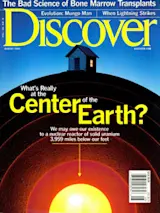A huge pile of sheep bones, 1,500 feet wide and 10 feet deep, hints at the materialistic ways of ancient Britons. Archaeologist David McOmish discovered the boneyard six miles from Stonehenge while conducting a survey for English Heritage, the historical preservation commission. "It looks like the remains of half a million sheep, all dating to around 700 B.C.E.," he says. The site is probably more than a trash heap. Well-placed pottery sherds, drinking vessels, and human remains point to ritual feasting.
Such events may have had religious connotations, but the gatherings were more likely devoted to gaining social status. "Sheep would have been symbols of wealth, and a mound like this certainly indicates a culture of display," McOmish says. The bone pile appeared around the time that people were starting to form new social networks as they moved from scattered farming communities to villages and towns. "We're probably looking at ...














